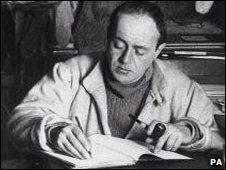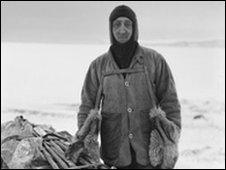Scott's last letters on display at Cambridge museum
- Published

The museum is named after Scott but includes artefacts from other explorers
The last letters of Captain Scott and his companions are to go on public display when a museum re-opens in Cambridge on Wednesday.
The Scott Polar Research Institute's museum, which also holds the diaries of Sir Ernest Shackleton, has had a £1.75m, two-year redevelopment.
Henry Robertson Bowers' journals and Shackleton's tea service will be on show there for the first time.
The museum began posting Scott's diary on Twitter last year.
Scott centenary
The institute is part of Cambridge University, which said the re-opening was in time for the centenary of Scott's departure from Britain in 1910 on the ill-fated Terra Nova expedition.
Institute director Professor Julian Dowdeswell said: "The redesigned Polar Museum is based on the theme of exploration into science, emphasising both the history of exploration of the Arctic and Antarctic and the wider environmental significance of the poles in a changing world.

Henry Robertson Bowers' journals of the Scott expedition can be viewed
"We can exhibit much more of our polar collection to the public than ever before and are now able to project not only the history of polar exploration, but also the contemporary significance of the poles in a warming world.
"The very moving last letters of Captain Scott and the iconic Antarctic photographs of Herbert Ponting are displayed alongside a series of exhibits on how science is undertaken in the very harsh conditions of the poles."
Another item returning to display after the closure is the watch used for navigation on Shackleton's perilous 800-mile journey in an open boat to rescue his men stranded on Elephant Island.
The Scott Polar Research Institute was established in 1920 by Frank Debenham, a geologist on Scott's 1910-1913 Antarctic expedition.